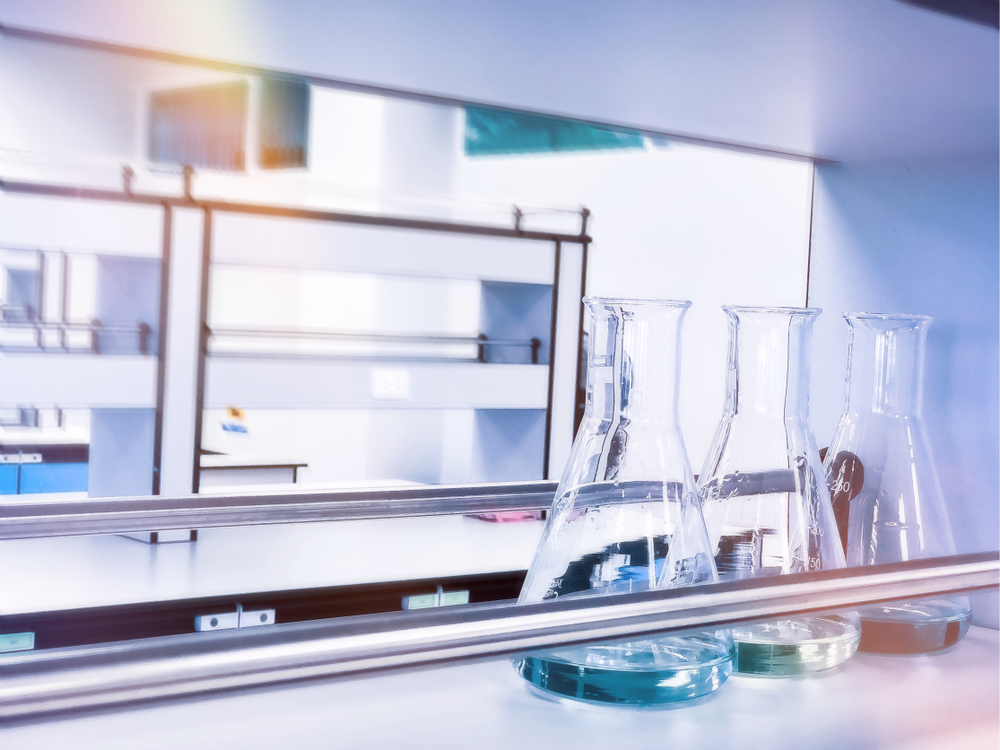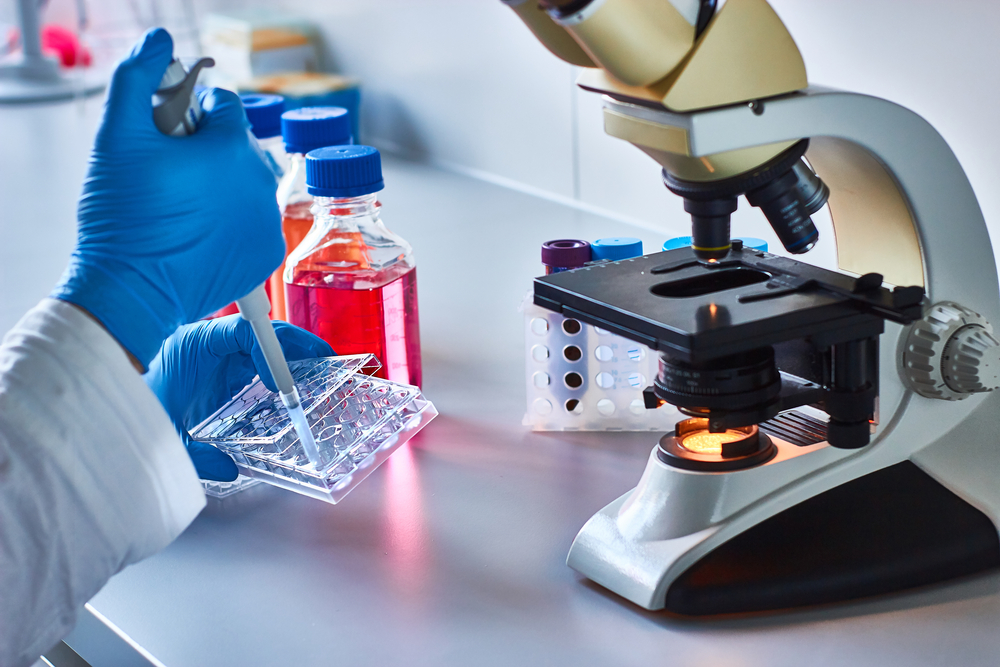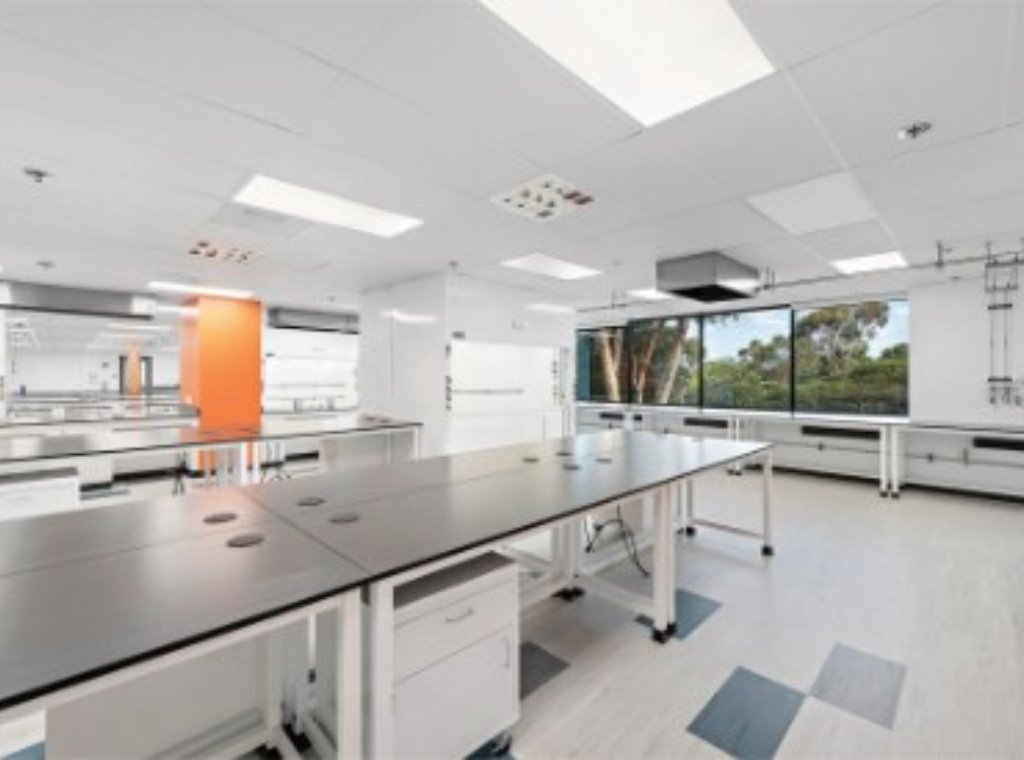
The choice of laboratory workbenches plays a crucial role in ensuring efficiency, safety, and longevity in rapidly evolving laboratory environments. Among the various materials available, metal benches, particularly those crafted from steel or stainless steel, stand out as stalwarts of functionality.
Other options often used in lab environments include epoxy resin, phenolic resin, and wood, all with their unique characteristics.
In laboratory design, each piece of furniture must meet the specific needs of the laboratory. Metal benches, characterized by their durability, chemical resistance, and versatility, have become indispensable assets in laboratories across diverse scientific disciplines.
In this article, we delve into the myriad benefits that metal workbenches bring to laboratory settings, exploring how their robust construction and unique properties contribute to the seamless orchestration of experiments, the maintenance of sterile conditions, and the overall enhancement of laboratory functionality.
Benefits of Metal Benches in Laboratory Settings
Metal benches offer several advantages in a laboratory setting, contributing to the overall efficiency, safety, and functionality of the workspace.

Here are some benefits of using metal benches in a laboratory:
1. Durability and Strength
Metal benches, often made of stainless steel or other durable alloys, are highly robust and resistant to corrosion, chemicals, and physical wear. This durability ensures a longer lifespan for the benches, reducing the need for frequent replacements.
2. Chemical Resistance
Metals, especially stainless steel, are resistant to a wide range of chemicals. This is crucial in a laboratory where various chemicals may be used or spilled during experiments. Metal benches can withstand exposure to corrosive substances without degrading or compromising their structural integrity.
3. Easy to Clean
Metal surfaces are generally smooth and non-porous, making them easy to clean and sterilize. This is essential in laboratories where maintaining a sterile environment is critical for accurate and reliable experiments.
4. Fire Resistance
Some metals, like stainless steel, have high resistance to fire. This property is important in laboratories where flammable materials or processes are present. Metal benches contribute to overall lab safety by reducing the risk of fire hazards.
5. Customization and Modularity
Metal benches can be designed and customized to meet specific laboratory requirements. They often come in modular designs, allowing for easy integration of additional features such as sinks, shelving, or specialized storage solutions. This adaptability enhances the functionality of the laboratory space.
6. Stability and Load-Bearing Capacity
Metals, particularly steel, provide excellent structural stability and load-bearing capacity. This is crucial for supporting heavy equipment, instruments, and materials commonly found in laboratory setups. Metal benches can withstand significant weight without compromising their stability.
7. Electromagnetic Shielding
Some metal benches, particularly those made of materials with good electrical conductivity, can act as electromagnetic shields. This property is beneficial in labs where sensitive electronic equipment or experiments are conducted, as it helps to minimize electromagnetic interference.
8. Long-Term Cost Efficiency
While metal benches may have a higher initial cost compared to some other materials, their durability, and low maintenance requirements often result in long-term cost savings. The reduced need for replacements and repairs can lead to overall cost efficiency over time.
9. Aesthetic Appeal
Metal benches often have a sleek and modern appearance, contributing to the overall aesthetic of the laboratory. This can enhance the professional look of the workspace and create a positive impression.
10. Compliance with Regulations
Metal benches may meet specific industry and safety regulations for laboratory environments, ensuring that the workspace adheres to necessary standards and guidelines.
It’s important to note that the specific benefits may vary depending on the type of metal used, the design of the bench, and the nature of the laboratory activities.
Lab Settings Where Metal Benches are Often Used

Metal benches are utilized in various industries where maintaining hygiene is a top priority. The durability, cleanability, and resistance to corrosion make metal benches, particularly those made of stainless steel, ideal for environments that require stringent hygiene standards. Here are some industries where metal benches are commonly used in labs due to their focus on hygiene:
1. Pharmaceutical Industry
Laboratories in the pharmaceutical industry often handle sensitive drugs and compounds. Metal benches, especially those made of stainless steel, provide a hygienic and clean surface for research, development, and quality control processes.
2. Biotechnology
Biotechnology and other wet labs involve the manipulation of living organisms and biological materials. Metal benches contribute to a sterile environment necessary for cell culture, genetic research, and other biotechnological applications.
3. Food and Beverage Industry
Laboratories in the food and beverage industry require strict hygiene measures to ensure the safety of products. Metal benches are used for quality control, microbiological testing, and food safety research.
4. Clinical and Medical Laboratories
Clinical and medical laboratories handle patient samples, diagnostic tests, and medical research. Metal benches are crucial in maintaining a hygienic setting for accurate testing and analysis.
5. Cosmetics and Personal Care Products
Laboratories in the cosmetics and personal care industry focus on product formulation and quality testing. Metal benches support hygiene protocols in labs dedicated to creating safe and effective beauty and personal care products.
6. Diagnostics and Pathology:
Laboratories involved in diagnostic testing and pathology deal with biological samples that require a sterile environment. Metal benches help maintain cleanliness and prevent contamination in these critical areas.
7. Environmental Testing
Environmental laboratories assess air, water, and soil quality. Metal benches are preferred for their resistance to corrosion in these settings where samples may contain aggressive chemicals.
8. Research and Development (R&D) Laboratories
R&D labs across various industries, including electronics, materials science, and more, utilize metal benches for their versatility, durability, and ease of maintenance. Hygiene is critical in R&D labs to ensure the accuracy and reliability of experiments.
9. Chemical Industry
Laboratories in the chemical industry handle a wide range of chemicals. Metal benches, especially those made of corrosion-resistant materials, are essential for ensuring a safe and hygienic workspace.
10. Microbiology and Virology
Labs focusing on microbiology and virology require sterile conditions to prevent cross-contamination and ensure the accuracy of research. Metal benches contribute to maintaining the necessary hygiene standards.
In these industries, the use of metal benches aligns with regulatory requirements and best practices for creating clean, durable, and reliable laboratory environments. The properties of metal, such as resistance to corrosion and ease of cleaning, make them indispensable in settings where hygiene is paramount.
Metal Benches: Steel vs. Stainless Steel

Steel
Steel is a broad term that refers to an alloy of iron and carbon, with additional elements often added to enhance its properties. Carbon content distinguishes steel from cast iron or wrought iron. Steel can be further classified into various types based on its composition and properties, and it may include alloying elements like manganese, chromium, nickel, and others.
Stainless Steel
Stainless steel is a specific type of steel that contains at least 10.5% chromium, which forms a thin, protective oxide layer on the surface. This layer provides stainless steel with its corrosion resistance and makes it highly resistant to rust and staining. Stainless steel is known for its durability, strength, and ability to withstand harsh environments, including exposure to chemicals.
Comparison and Benefits in a Laboratory Environment
1. Corrosion Resistance
- Steel: Depending on the specific type of steel, it may be susceptible to corrosion over time, especially in the presence of moisture or chemicals.
- Stainless Steel: Stainless steel is highly corrosion-resistant due to its chromium content. It forms a passive layer that protects the metal from rust and corrosion. This makes it ideal for laboratory environments where exposure to corrosive substances is common.
2. Chemical Resistance
- Steel: While some types of steel may offer decent chemical resistance, others may be prone to corrosion when exposed to harsh chemicals.
- Stainless Steel: Stainless steel is known for its excellent chemical resistance. It can withstand exposure to a wide range of chemicals commonly used in laboratories without corroding or degrading.
3. Cleanability and Hygiene
- Steel: Steel work surfaces are generally smooth, making them easy to clean. However, certain types of steel may require more attention to prevent corrosion.
- Stainless Steel: Stainless steel benchtops are highly hygienic and easy to clean. Its non-porous surface prevents the growth of bacteria and makes it suitable for environments where cleanliness is crucial, such as laboratories.
4. Strength and Durability
- Steel: Steel is known for its strength and durability, but specific properties can vary depending on the type of steel.
- Stainless Steel: Stainless steel is equally strong and durable, with the added benefit of corrosion resistance. It maintains its structural integrity in harsh laboratory conditions, ensuring a longer lifespan.
5. Aesthetic Considerations:
- Steel: The appearance of steel may vary, and it might require coatings or finishes for enhanced aesthetics.
- Stainless Steel: Stainless-steel lab benches and laboratory cabinets have a modern and attractive appearance, often chosen for their sleek and clean look. It adds a professional touch to laboratory spaces.
6. Cost Considerations:
- Steel: The cost of steel can vary based on the type and alloying elements. Some types of steel may be more cost-effective than stainless steel.
- Stainless Steel: Stainless steel tends to be more expensive than basic steel due to the added chromium and other alloying elements. However, its long-term durability may offset the initial cost through reduced maintenance and replacement expenses.
In lab spaces, stainless steel is often preferred over basic steel due to its superior corrosion resistance and hygiene properties. The resistance to corrosion and chemicals, coupled with ease of cleaning, makes stainless steel well-suited for environments where maintaining a sterile and safe workspace is essential. Additionally, the longevity and durability of stainless steel contribute to its overall cost-effectiveness in the long run.

Conclusion
As laboratories evolve to meet the specific needs of cutting-edge research and experimentation, the importance of selecting the right infrastructure becomes increasingly apparent in lab design. Materials used for all laboratory furniture require careful consideration. High-quality materials are crucial for fume hoods, casework, sinks, workstations, lab tables, countertops, and other lab furniture.
Metal lab benches, like laboratory casework, whether fashioned from steel or stainless steel, emerge as stalwart companions in this journey. Consulting an accredited provider and installer of laboratory furniture is the best way to ensure appropriate lab bench choices.
Their unparalleled durability, corrosion resistance, and adaptability to diverse laboratory needs position them as indispensable assets. From withstanding the rigors of chemical exposure to ensuring a sterile and hygienic environment, these metal benches not only meet but exceed the stringent requirements of modern laboratories.
In conclusion, the benefits of metal workbenches extend far beyond their robust physicality; they become catalysts for efficiency, safety, and innovation in the ever-evolving landscape of scientific exploration.




